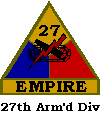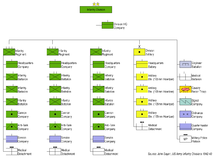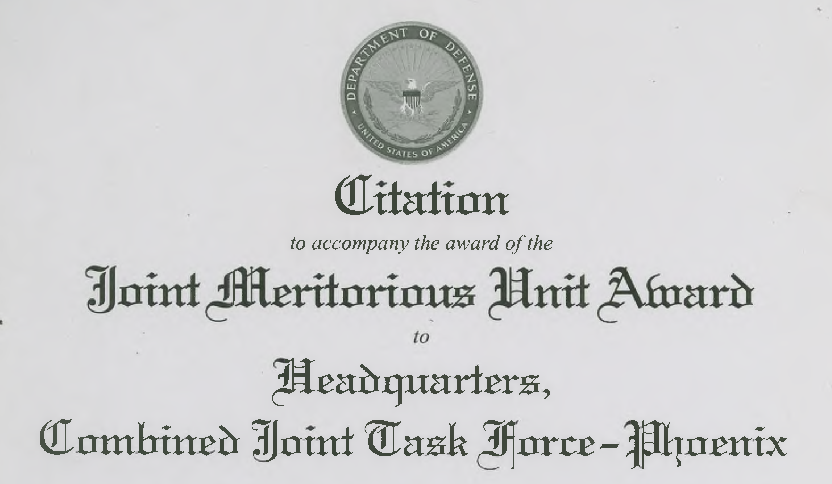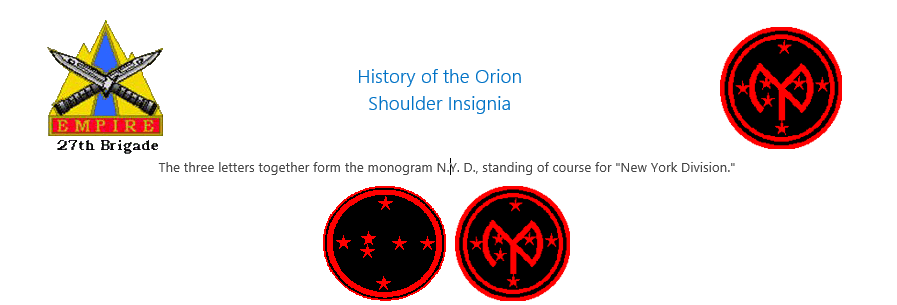
History of the 27th Infantry Division
“Orion” The New York Division
The 27th Infantry Brigade Combat Team (“Empire”[1]) is an infantry brigade combat team of the New York Army National Guard, one of the brigades that make up the 42nd Infantry Division.
The state mission of the 27th Infantry Brigade is to maintain a manned, trained and equipped force capable of rapid deployment to any area within New York to aid civil authorities. The 27th Infantry Brigade Combat Team is also tasked with overseas deployment missions and must be capable to respond to any threat, foreign or domestic.
Composition of the Twenty-Seventh Division in WWI
- Fifty-third Infantry Brigade: 105th Infantry,106th Infantry, 105th Machine Gun Battalion
- Fifty-fourth Infantry Brigade: 107th Infantry, 108th Infantry, 106th Machine Gun Battalion.
- Fifty-second Field Artillery Brigade:104th Field Artillery (75mm), 105th Field Artillery (75mm), 106th Field Artillery (155mm), 102nd Trench Mortar Battery
- Divisional Troops: 104th Machine Gun Battalion, 102d Engineers, 102d Field Signal Battalion, Headquarters Troop.
- Trains: 102nd Train Headquarters and Military Police, 102nd Ammunition Train, 102nd Supply Train, 102nd Engineer Train, and 102nd Sanitary Train.
After World War I the 27th Infantry Division was reactivated back in the New York National Guard for peacetime service, climaxed by participation in the First Army maneuvers of 1940.

Composition of the Twenty-Seventh Division between the wars

Square Division example: 1918 US Infantry Division. On the far left can be seen two Brigades of two Regiments each
- Fifty-third Infantry Brigade
- 105th Infantry
- 106th Infantry
- Fifty-fourth Infantry Brigade:
- 107th Infantry
- 108th Infantry
- Fifty-second Field Artillery Brigade:
- 104th Field Artillery (75mm)
- 105th Field Artillery (75mm)
- 106th Field Artillery (155mm)
- 102nd Ammunition Train
- Special Troops:
- Headquarters & Headquarters Company
- 27 Military Police Company
- 27th Signal Company
- 27th Tank Company
- 102nd Ordnance Company
- Separate Units:
- 102nd Engineer Regiment
- 27th Division Aviation (102nd Observation Squadron)
- 102nd Medical Regiment
- 102nd Quartermaster Regiment
World War II
The 27th Infantry Division was federalized for service on October 15th, 1940 and initially commanded by Major General William Haskell. At this time it still retained its WWI organization of two brigades and four regiments. The 53rd Brigade consisted of the 105th and 106th Infantry regiments while the 54th Brigade contained the 108th and 165th Infantry regiments. Following a lengthy period of maneuvers and training, the 27th was ordered to California in December following the Japanese bombing of Pearl Harbor. While in California the 27th awaited orders to ship out and concentrated on bringing itself up to the authorized field strength of 1,012 officers and 21,314 enlisted men. The division’s strength had been reduced by discharges to around 14,000 men. The first elements of the division boarded ships bound for Hawaii on February 27th 1942, the first Infantry Division to leave the states following Pearl Harbor.
The division remained on Hawaii for a number of months, during which time it was triangularized, with the 108th Infantry regiment being reassigned to the 40th Division. A division that has been triangularized has been given three infantry regiments instead of the four of a square division. This final reorganization dismantled the brigade structure and again dropped the division’s strength to 14,000 men. Following the reorganization, the 27th Division was shifted to Oahu, where it would relieve the 25th Infantry Division, which was slated to join the U.S forces fighting in Guadalcanal. For most of its time in Hawaii, the 27th was under the command of Brigadier General Ralph Pennel.
On November 20th 1942, the 27th Infantry Division embarked on its first combat assignment, the capture of the coral atoll of Makin. The 27th also had a new division commander, Major General Ralph Smith. Units from the 27th Division also occupied the Majuro atoll on February 1st 1944 and successfully assaulted Eniwetok Island on February 19th of the same year. In June 1944, the division landed on Saipan, where its regiments fought together for the first time as a full division. Following Saipan the division was rested and reinforced at Espirto Santo for seven months before any further operations. During this time the 27th received its final division commander, Major General George Griner Jr. On April 12th, 1945 the division landed on Okinawa, where it would remain until September when it was sent to Japan briefly for garrison duty. The division was mustered out in late December of the same year. Since its arrival in the Pacific, the 27th Infantry Division had suffered 1,512 killed in action, 4,980 wounded in action and 332 who later succumbed to their wounds.
General Smith had been removed from command following a dispute with the aggressive and eccentric Marine commander, General Holland “Howling Mad” Smith who had been in overall command of the Saipan invasion. Holland Smith claimed that Ralph Smith had disregarded orders and mishandled the 27th Division, prompting the relief order. Later court of inquiry showed that the charges were for the most part unsubstantiated and General Ralph Smith was quickly given a new command.
The 27th returned to the states for deactivation in December 1945, the longest serving National Guard unit.
Triangular Division example: 1942 U.S. infantry division.
- Fifty-third Infantry Brigade: 105th Infantry,106th Infantry, 105th Machine Gun Battalion
- Fifty-fourth Infantry Brigade: 107th Infantry, 108th Infantry, 106th Machine Gun Battalion.
- Fifty-second Field Artillery Brigade:104th Field Artillery (75mm), 105th Field Artillery (75mm), 106th Field Artillery (155mm), 102nd Trench Mortar Battery
- Divisional Troops: 104th Machine Gun Battalion, 102d Engineers, 102d Field Signal Battalion, Headquarters Troop.
- Trains: 102nd Train Headquarters and Military Police, 102nd Ammunition Train, 102nd Supply Train, 102nd Engineer Train, and 102nd Sanitary Train.
From soon after World War II to 1967–68 the 27th Infantry Division remained active in the National Guard.
Post World War II History of the 27th Division
After a short period of inactivity following the end of the war, the division was reconstituted along the lines of its war time structure with limited reorganizations.



These seven stars represent the brighter stars of the constellation Orion. They are included in the insignia as a compliment to Major-General O’Ryan, who has commanded the New York Division for seven years. When these units are all assembled as shown here, we have the complete insignia of the 27th division (now the 27th Brigade) — probably the most unique insignia of any American Army Unit.
Astronomy Played a Part In Designing Insignia Of 27th